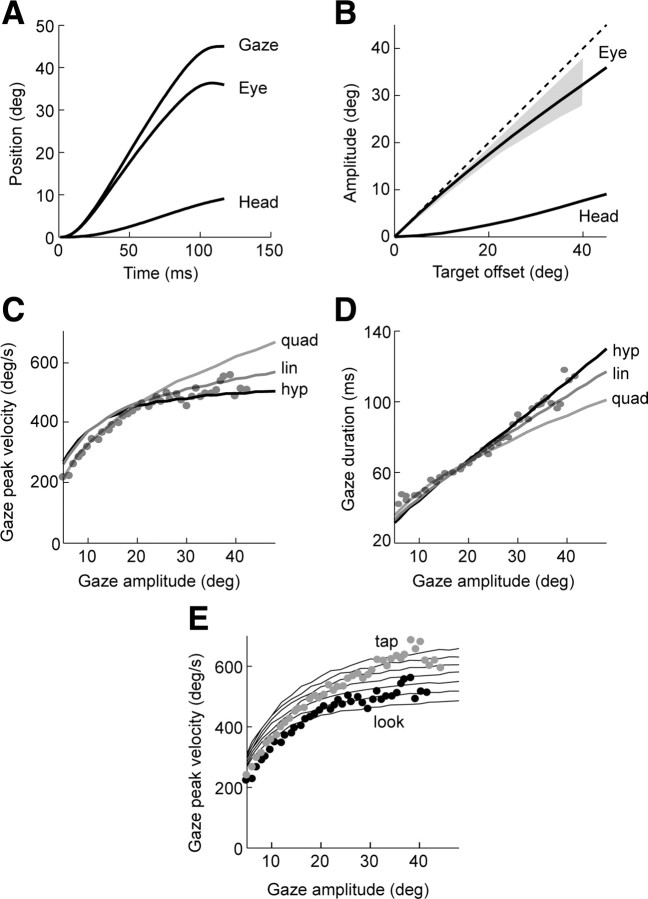Figure 5.
Kinematic characteristics of gaze appear consistent with a hyperbolic temporal discounting of reward. A, Simulation results for a gaze change to a target at 45°. Both the eyes and the head contribute to the gaze change, with the eyes leading the movement. B, Displacement of eye and head as a function of gaze amplitude. The gray region represents data from the study by Goossens and Van Opstal (1997). C, Peak gaze velocity as a function of gaze amplitude for three forms of temporal discounting. The data points are from the study by Epelboim et al. (1997). Parameter values are as follows: hyperbolic, α = 1.35 × 104 and β = 2.5; linear, α = 2.6 × 104; quadratic, α = 2.0 × 105. D, Gaze duration as a function of gaze amplitude. Parameters are same as in C. E, Effect of context on gaze velocities. The data points are from the study by Epelboim et al. (1997). The gray data points correspond to the tap task in which volunteers looked at the target that they were reaching for, and the black data points correspond to the look task, in which they only looked at the target. Simulation results of the hyperbolic model are shown by the lines. The stimulus value α was increased from α = 1.25 × 104 to α = 2.45 × 104.

